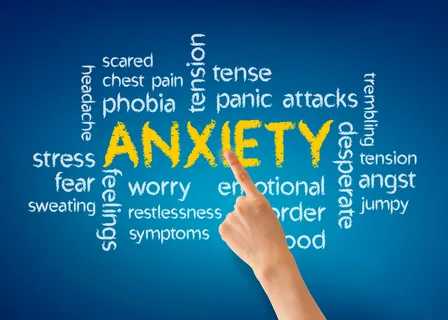In the current digital era, technology is a major part of our everyday lives and offers a lot of advantages and conveniences. On the other hand, excessive technology use, also referred to as technology addiction or problematic internet use, can have a detrimental effect on mental health and increase anxiety. This essay will discuss the connection between anxiety and technology addiction, frequent indicators of excessive internet use, and methods for striking a digital balance in order to effectively manage anxiety.
Recognizing the Connection Between Technology Addiction and Anxiety
Effect of Addiction to Technology on Anxiety:
Anxiety and stress can be made worse by technology addiction, which is defined by obsessive or excessive usage of digital gadgets and internet platforms. Constant connectedness and excessive screen time can cause sensory overload, information overload, and a constant state of stimulation, all of which can exacerbate feelings of overwhelm and anxiety.
Avoidance and Escape:
People may use technology as a way to avoid or escape unpleasant feelings like boredom or anxiety. Overuse of technology as a coping strategy can prolong a vicious cycle of avoidance and anxiety as people grow more dependent on electronic diversion to get through challenging emotions.
FOMO and social comparison:
Particularly social networking sites can exacerbate feelings of inadequacy and anxiety because users compare themselves to others and work hard to create a well-curated online presence. Anxiety and a feeling of alienation can also be exacerbated by FOMO, or the fear of missing out on significant occasions or experiences that are shared on social media.
Typical Indices of Addiction to the Internet
Overuse of Screen Time:
excessive use of digital devices—such as computers, tablets, and smartphones—at the expense of other commitments or activities.
Abrupt Decline:
feeling incapable of restricting or controlling one’s use of technology, even in the face of drawbacks such ignoring relationships, job, or education.
obsession with technology
cravings or constant thoughts about digital devices and online activities, even when one is doing other things or connecting with other people.
Symptoms of Withdrawal:
feeling anxious, restless, or irritable when they can’t use digital gadgets or internet platforms due to withdrawal symptoms.
Adverse Effect on Welfare:
suffering from the detrimental effects of excessive technology use on one’s physical or mental health, such as disturbed sleep habits, reduced productivity, or increased worry.
Techniques for Determining Digital Equilibrium
Establish Limits and Boundaries:
To avoid overuse and encourage digital balance, clearly define the parameters surrounding technology use and place time restrictions on screens. Set aside certain periods for activities that don’t involve technology, and give offline relationships and hobbies top priority.
Use Technology Mindfully:
When utilizing technology, practice intention and mindfulness by keeping your attention on the here and now as well as the goal of your digital interactions. By taking regular pauses, establishing boundaries for your technology use, and avoiding multitasking, you can cultivate digital awareness.
Take Part in Activities Offline:
Make time for hobbies, artistic endeavors, in-person social connections, time spent in nature, and other things that foster creativity, relaxation, and connection with others your top priorities.
Create Well-Being Coping Mechanisms:
Find healthy coping mechanisms to deal with stress and anxiety that don’t need technology, such exercising, practicing mindfulness meditation, deep breathing techniques, or taking part in activities that encourage wellbeing and relaxation.
Plan Your Digital Detox:
Plan frequent times for digital detoxification to fully disconnect from technology and rejuvenate. Set aside particular periods of time, such the weekends or nights, to spend offline activities that encourage rest and renewal instead of using digital gadgets.
Seek Assistance and Relationships:
To get help and encouragement in managing anxiety associated to technology addiction and establishing a digital balance, reach out to friends, family, or mental health experts. Seek advice on creating good tech habits and discuss your struggles and experiences with people you can trust.
Develop Your Self-Reflection:
Consider your relationship with technology and the effects it has on your wellbeing and mental health. Determine the triggers or behavioral patterns that lead to anxiety and technology addiction, then investigate appropriate solutions to deal with these issues.
In summary
In the current digital era, maintaining a healthy digital balance is crucial for reducing anxiety and advancing mental health and wellbeing in general. People can develop a healthier relationship with technology and lessen anxiety associated with excessive technology use by learning how anxiety and technology addiction are related, identifying common indicators of problematic internet use, and putting strategies for finding digital balance into practice. Recall that striking a digital balance is a continuous effort that calls for intentionality, self-awareness, and proactive self-care routines.
